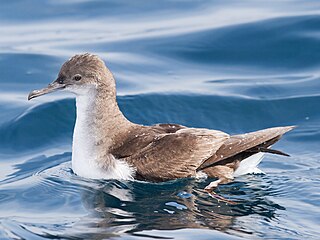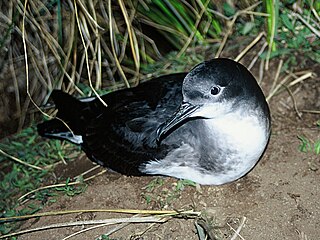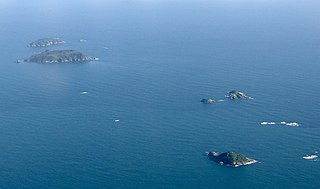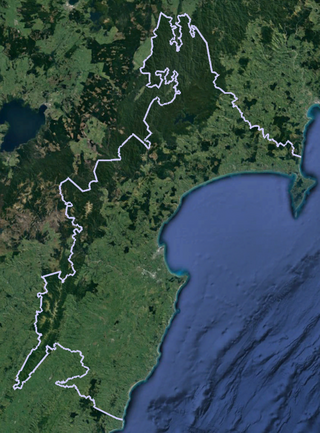Ted Howard | |
|---|---|
 Howard in 2022 | |
| Born | Thomas Edward Howard |
| Education | University of Auckland |
| Occupation | Commercial fisherman |
| Known for | Wildlife conservation |
| Spouse | Ailsa McGilvary |
Thomas Edward Howard QSM is a New Zealand conservationist.
Ted Howard | |
|---|---|
 Howard in 2022 | |
| Born | Thomas Edward Howard |
| Education | University of Auckland |
| Occupation | Commercial fisherman |
| Known for | Wildlife conservation |
| Spouse | Ailsa McGilvary |
Thomas Edward Howard QSM is a New Zealand conservationist.
Howard has a Bachelor of Science in zoology (marine ecology) from the University of Auckland, [1] where he studied under John Morton. [2]
Howard has more than 30 years of commercial fishing experience. [3] He began his career in the industry in the Firth of Thames before moving to work based out of Wellington, Greymouth and Nelson. He has coastal and deep-sea maritime qualifications and has worked for the Fishing Industry Board as a technical advisor. [4]
Howard has also been president of the New Zealand Recreational Fishing Council, an organisation that lobbies for the sustainable management of fisheries in New Zealand, for the benefit of recreational fishers. [5] [4] [6]
Howard has been chair of the Kaikōura water zone committee, a joint committee of Environment Canterbury and Kaikōura District Council. This committee works with Environment Canterbury staff and members of the local community on water management initiatives in the Kaikōura region. [7] [8] [9]
Howard has also been president of the Kaikōura Boating Club, [10] and is an office-holder of the Lions Club of Kaikōura. [11]
In the 2014 general election, Howard stood as a candidate for the Money Free Party in the Kaikōura electorate, finishing ninth with 72 votes. [12] He stood again in the Kāikoura electorate at the 2020 general election, this time as an independent, receiving 93 votes to finish 11th out of 12 candidates. [13]
Howard is a former member of the Kaikōura District Council, and in 2016 he stood for election to the position of mayor, finishing fourth. [14] [15]

Howard is one of the trustees and the chair of The Hutton's Shearwater Charitable Trust, formed in October 2008 to promote conservation of the endangered Hutton's shearwater or kaikōura tītī. [16] [1] The bird's range is Australian and New Zealand waters, but it breeds only on mainland New Zealand. Its conservation status is Endangered, because there are just two remaining breeding colonies, both located in the Seaward Kaikōura Range. [17] It is the only seabird in the world that is known to breed in alpine areas.
In his role as chair of the Trust, Howard leads conservation measures for the shearwaters, including community initiatives to rescue birds that crash-land at night on streets in Kaikōura. [17] Howard has been involved in establishing and maintaining a new protected breeding area for Hutton's shearwaters on the Kaikōura Peninsula, including a predator-proof fence, man-made burrows, and translocating fledgling birds from the remaining colonies. [1] [18]
In 2017, Howard drew attention to the impacts of the 2016 Kaikōura earthquake on the breeding population of shearwaters. He outlined the loss of adult birds and chicks in the alpine colonies, and the increased risk of predation as a result of landslides caused by the earthquake. [19]
In November 2019, Howard met with the Prince of Wales during the royal visit to Kaikōura, and discussed the conservation efforts for Hutton's shearwaters. [20] [21]
Howard has been closely involved in the study of banded dotterels or pohowera at Kaikōura that was initiated by Ailsa McGilvary in the 2015/16 breeding season to systematically monitor the birds' breeding success. [2] The study has continued over multiple breeding seasons, confirming the poor breeding success, with the leading cause being cat predation of eggs, chicks and adult birds. [22] Howard shares in much of the work of monitoring nests. [23]
Howard was one of the founders of an incorporated society, Te Korowai o Te Tai o Marokura, Kaikōura Coastal Marine Guardians (Te Korowai). [2] The society was formed in 2005 and incorporated in 2008, [24] to develop use and protection strategies and actions for the Kaikōura coast. [25] Howard was part of the work of the society that led to the passing of the Kaikōura (Te Tai o Marokura) Marine Management Act in August 2014. [4] [26] [27] This Act established the Kaikōura marine management area, including a new marine reserve, sanctuaries and protections for whales and fur seals, and established new fishing regulations. It also recognised taiapure (traditional Māori fishing grounds which include areas of special cultural or spiritual significance). [28] Howard is currently a community representative member of Te Korowai. [3]
In 2015, Howard was appointed to a statutory role under the Kaikōura (Te Tai o Marokura) Marine Management Act, as a member of the Kaikōura Marine Guardians. [29] [30]
In the 2022 New Year Honours, Howard and his wife Ailsa McGilvary were each awarded the Queen's Service Medal, for services to conservation, particularly wildlife conservation. [31] [32]
Howard is married to Ailsa McGilvary, and is a long-term resident of Kaikōura. [2]
In July 2008, Howard was diagnosed with advanced melanoma, and told that there was only a two per cent chance of his surviving another two years. He credits his survival to major changes in diet and lifestyle, including reducing stress and positive thinking. [33] [34]

Shearwaters are medium-sized long-winged seabirds in the petrel family Procellariidae. They have a global marine distribution, but are most common in temperate and cold waters, and are pelagic outside the breeding season.

The family Procellariidae is a group of seabirds that comprises the fulmarine petrels, the gadfly petrels, the diving petrels, the prions, and the shearwaters. This family is part of the bird order Procellariiformes, which also includes the albatrosses and the storm petrels.

The sooty shearwater is a medium-large shearwater in the seabird family Procellariidae. In New Zealand, it is also known by its Māori name tītī, and as muttonbird, like its relatives the wedge-tailed shearwater and the Australian short-tailed shearwater.

Kaikōura is a town on the east coast of the South Island of New Zealand. It is located on State Highway 1, 180 km north of Christchurch. The town has an estimated permanent resident population of 2,330.

The Kaikōura Ranges are two parallel ranges of mountains located in the northeast of the South Island of New Zealand. The two ranges are visible from a great distance, including from the southern coast of the North Island.

The Westland petrel(Procellaria westlandica),, also known as the Westland black petrel, is a moderately large seabird in the petrel family Procellariidae, that is endemic to New Zealand. Described by Robert Falla in 1946, it is a stocky bird weighing approximately 1,100 grams (39 oz), and is one of the largest of the burrowing petrels. It is a dark blackish-brown colour with black legs and feet. It has a pale yellow bill with a dark tip.

The flesh-footed shearwater is a medium-sized shearwater. Its plumage is black. It has pale pinkish feet, and a pale bill with a distinct black tip. Together with the equally light-billed pink-footed shearwater, it forms the Hemipuffinus group, a superspecies which may or may not have an Atlantic relative in the great shearwater. These large shearwaters are among those that have been separated into the genus Ardenna. Recent genetic analysis indicates evidence of strong divergence between Pacific colonies relative to those in South and Western Australia, thought to be explained by philopatry and differences in foraging strategies during the breeding season.
Kaitiakitanga is a New Zealand Māori term used for the concept of guardianship, for the sky, the sea, and the land. A kaitiaki is a guardian, and the process and practices of protecting and looking after the environment are referred to as kaitiakitanga.

The streaked shearwater is a species of seabird. The adult bird averages 48 cm (19 in) in length, with a 122 cm (48 in) wingspan.

The fluttering shearwater is a species of seabird in the family Procellariidae. It is endemic to New Zealand and migrates to Australia and the Solomon Islands. Its natural habitats are open seas and rocky shores. It has been known as Forster's shearwater in the past.

Hutton's shearwater or the kaikōura tītī, is a medium-sized ocean-going seabird in the family Procellariidae. Its range is Australian and New Zealand waters, but it breeds only in mainland New Zealand. Its conservation status is Endangered, because there are just two remaining breeding colonies, located in the Seaward Kaikōura Range. Six other shearwater colonies have been wiped out by introduced pigs. Hutton's shearwater is the only seabird in the world that is known to breed in alpine areas. Conservation measures for the bird include community initiatives to rescue birds that crash-land at night on streets in Kaikōura, and the establishment of a protected area on the Kaikōura Peninsula including a predator-proof fence, man-made burrows, and translocating fledglings from the remaining colonies.

The Noises are a collection of islands lying northeast of Rakino Island in Auckland's Hauraki Gulf, off the coast of the North Island of New Zealand. The largest and most forested islands are Ōtata and Motuhoropapa; Orarapa and Maria/Ruapuke are also significant. After a rat eradication campaign in the 1960s, Maria was the first New Zealand island to become predator-free. The lack of invasive predators, intact native forest, and large numbers of breeding seabirds give the Noises significant conservation value. There has however been a marked decline in marine biodiversity surrounding the islands from over-fishing.

The Kowhai Valley and Shearwater Stream Important Bird Area comprises a disjunct site in the Seaward Kaikōura Range in the north-east of New Zealand’s South Island, some 15 km inland from the coastal town of Kaikōura. The site, at an altitude of 1200–1800 m above sea level, has been identified as an Important Bird Area by BirdLife International because it contains the entire breeding population of Hutton's shearwaters; about 100,000 pairs in two colonies.
Te Korowai o Wainuiārua is a grouping of Māori hapū in New Zealand, formed in 2014. It is made up of Tamahaki, Tamakana and Uenuku ki Manganui-a-te-Ao, nā Tukaihoro in Whanganui. The area of interest covers some 6,130 km2 (2,370 sq mi), including central and upper parts of the Whanganui River, Whanganui National Park, Tongariro National Park, Raetihi and National Park. A Treaty settlement signed at Raetihi Marae on 29 July 2023 included an apology, $28.5m of compensation, return of forestry land at Erua, the former Waikune prison, support to create a predator-proofed sanctuary at Pōkākā and a seat on Tongariro-Taupō Conservation Board.

Hikurangi Marine Reserve is a marine reserve off the coast of the Kaikōura District, in the Canterbury Region of New Zealand's South Island. It is the largest and deepest marine reserve in New Zealand.
Long Island-Kokomohua Marine Reserve is a marine reserve, in the Marlborough Region of New Zealand's South Island. It covers an area of 619 hectares at the entrance to the Queen Charlotte Sound in the Marlborough Sounds. It was the first marine reserve established on the South Island.

Te Angiangi Marine Reserve is a marine reserve covering a marine area of 446 hectares in the Hawke's Bay Region of New Zealand's North Island. It was established in 1997 and is administered by the Department of Conservation.

Westhaven Marine Reserve is a marine reserve covering an area of 536 hectares in the Whanganui Inlet at the top of New Zealand's South Island. It was established in 1994 and is administered by the Department of Conservation.

Ailsa Diane McGilvary is a New Zealand bird conservationist, and photographer.

Wharariki Ecosanctuary is a wildlife sanctuary within a predator-proof fence at Cape Farewell, New Zealand.